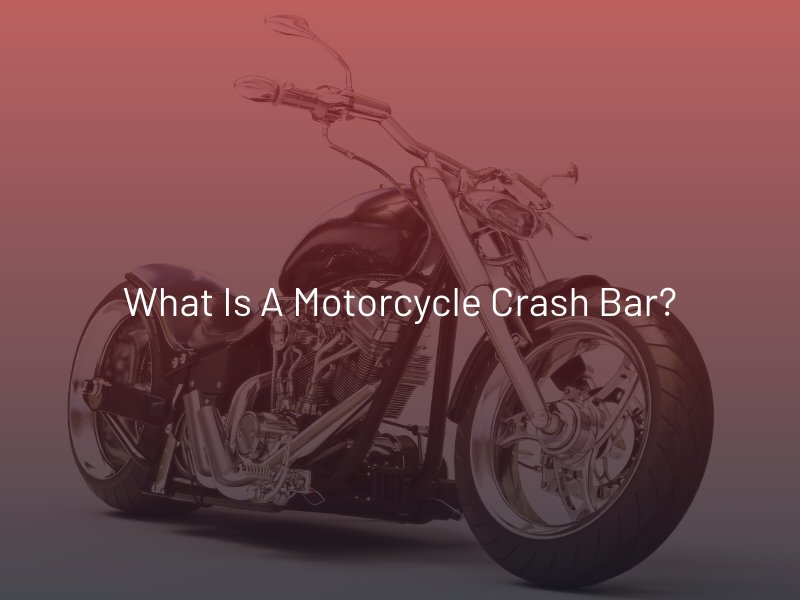What is a Motorcycle Crash Bar?
Motorcycle riders must prioritize safety to ensure enjoyable and secure journeys. One essential safety feature that motorcyclists often consider is the motorcycle crash bar.

Motorcycle Crash Bar Definition and Purpose
A motorcycle crash bar, also known as a crash guard, engine guard, or highway bar, is a protective component typically made of steel or aluminum. It is designed to shield crucial motorcycle components, such as the engine, frame, and fuel tank, in the event of a crash or tip-over. Crash bars are usually attached to the motorcycle’s frame and extend outward, providing a buffer zone between the bike and the ground or any potential obstacles.
Key Benefits of Motorcycle Crash Bars
Motorcycle crash bars offer the following potential benefits to riders:
Protection Against Impact
The primary purpose of crash bars is to absorb and distribute impact energy during a crash or tip-over. In addition, by providing a physical barrier between the motorcycle’s vulnerable components and the ground or obstacles, crash bars help minimize damage and prevent costly repairs.
Safeguarding Rider’s Legs
During a crash, a motorcycle may slide or tumble, posing a significant risk to the rider’s legs. Crash bars offer an additional layer of protection by creating a sturdy framework around the motorcycle, reducing the likelihood of direct leg contact with the ground or other objects.
Preventing Secondary Damage
In addition to protecting the motorcycle and the rider, crash bars can also help prevent secondary damage to surrounding vehicles or structures. The motorcycle stays elevated and redirects the impact away from critical components.
Mounting Point for Accessories
Crash bars often come with additional benefits, such as serving as mounting points for various accessories. These can include auxiliary lights, highway pegs, or storage attachments, expanding the functionality of a motorcycle and enhancing the riding experience.
Considerations for Choosing Crash Bars
When selecting crash bars for a motorcycle, the following factors should be considered:
Compatibility
The crash bars must be compatible with a motorcycle’s make, model, and year. Different motorcycles can have specific mounting points or design considerations.
Material and Construction
Crash bars should be made from high-quality materials such as steel or aluminum, as they offer excellent strength and durability. Also, consider the design and construction to ensure a proper fit and ease of installation.
Potential Drawbacks of Motorcycle Crash Bars
While motorcycle crash bars can provide certain benefits, it is important to be aware of potential drawbacks associated with their use:
Increased Weight and Bulkiness
Crash bars add extra weight and bulk to the motorcycle. This additional weight can affect the bike’s handling, especially during quick maneuvers and tight turns. The increased size may also make it challenging to filter through traffic or navigate in congested areas.
Limitations in Crash Scenarios
While crash bars can provide protection in certain low-speed crashes or tip-over situations, they may have limited effectiveness in high-speed collisions or more severe motorcycle accidents.
Risk of Leg Injuries
In some crash scenarios, crash bars may increase the risk of leg injuries if a rider’s legs become entangled with the crash bars. This is especially true if the rider is not wearing appropriate protective gear.